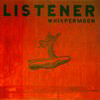 Every single song on Whispermoonis moody, dark, soulful, and reminds me of an old, sparsely populatedbar in the middle of a desert somewhere around dusk. Live drums,upright bass, bluesy vocal samples, and a smattering of scratching andcoarse atmospheres bounce about the entire album weaving catchymelodies and smooth grooves. "Train Song" features a ringing acousticguitar, a beautiful female vocal part that summons the blues, and anirresistible beat fed by both live drums and thick digital bass drops."Decadence," on the other hand, is a beat-heavy and more vocallydexterous track, fed by the energy of a bass guitar and Manchild'sraps. Thematically, the topics of many of the songs are a bit grandioseand this is where Listener's weakness is exposed. "You're SoUnderground" attempts to critique the I'm-a-player attitude so popularin rap but ends up falling short in the rhyme-department. Listener'swriting isn't entirely bad, but it's certainly not as strong as itcould be. I find myself agreeing with a lot of what the guy has to say,but I often feel as if it could be said with more command. That's notto say that every rap Listener makes is dull. The aforementioned "TrainSong" is a gorgeous narrative the likes of which I've never heard inhip-hop. It's just that some of themes (such as drug use, love, media,and religion) are laid so bare as to be a bit cheesey; many of thelyrics simply come off as too calculated and his vocal style begins tosound repetitive as the album moves along. Musically this album iscolorful, inescapably catchy, and varied; there's not a dull moment tobe found. Perhaps with some reflection and a bit more disciplineListener will become a lyrical force to be reckoned with, as well.
Every single song on Whispermoonis moody, dark, soulful, and reminds me of an old, sparsely populatedbar in the middle of a desert somewhere around dusk. Live drums,upright bass, bluesy vocal samples, and a smattering of scratching andcoarse atmospheres bounce about the entire album weaving catchymelodies and smooth grooves. "Train Song" features a ringing acousticguitar, a beautiful female vocal part that summons the blues, and anirresistible beat fed by both live drums and thick digital bass drops."Decadence," on the other hand, is a beat-heavy and more vocallydexterous track, fed by the energy of a bass guitar and Manchild'sraps. Thematically, the topics of many of the songs are a bit grandioseand this is where Listener's weakness is exposed. "You're SoUnderground" attempts to critique the I'm-a-player attitude so popularin rap but ends up falling short in the rhyme-department. Listener'swriting isn't entirely bad, but it's certainly not as strong as itcould be. I find myself agreeing with a lot of what the guy has to say,but I often feel as if it could be said with more command. That's notto say that every rap Listener makes is dull. The aforementioned "TrainSong" is a gorgeous narrative the likes of which I've never heard inhip-hop. It's just that some of themes (such as drug use, love, media,and religion) are laid so bare as to be a bit cheesey; many of thelyrics simply come off as too calculated and his vocal style begins tosound repetitive as the album moves along. Musically this album iscolorful, inescapably catchy, and varied; there's not a dull moment tobe found. Perhaps with some reflection and a bit more disciplineListener will become a lyrical force to be reckoned with, as well.samples:


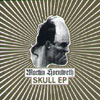 Best known for his work as bandleader and drummer for Norwegiancollective Jaga Jazzist, Martin Horntveth sets aside the sticks toconcentrate more on the role of sound manipulator, mixer and produceron his second solo release. While the prevalent, fast-paced industrialsounds on the six-track SkullEP have very little in common with the style of music that Jaga Jazzistperform, certain elements of rhythms and low end sounds may seemfamiliar. Grinding gears at the top of the disc, "100%" fuses distortedup-tempo beats and demolished keyboard bass sounds with high-pitcheddental drill chirps and whistling, detuned keyboard lines for a trackthat teeters on the edge of cacophony. The warm, floating tremolokeyboard and heavy, precise drum machine propelled "Comic" is litteredwith clipped spoken word samples and sound snippets, which can befollowed along with on the handy, phonetically sounded "lyric" sheetinside the disc's front cover. Horntveth adds his frenetic sampling ofbeats and synth squelches to fellow Norwegian metal outfitNOPLACETOHIDE's tight, chugging guitars for a sixty second rendition ofa track of theirs on "Sole (Remix)." The distorted shuffle of "SzakalIs Home For X-Mas" rounds out Skull's twenty minutes with anarrangement of squelches and bass end that bring in a pretty keyboardmelody which, by the tune's end, glimmers through to slightly conveythe festive mood indicated in the title. The farthest thing from a"drummer" record, Horntveth's electronic-based compositions andarrangements are solid enough to provide a viable outlet aside fromJaga Jazzist and make a name known by those that don't necessarily readliner notes.
Best known for his work as bandleader and drummer for Norwegiancollective Jaga Jazzist, Martin Horntveth sets aside the sticks toconcentrate more on the role of sound manipulator, mixer and produceron his second solo release. While the prevalent, fast-paced industrialsounds on the six-track SkullEP have very little in common with the style of music that Jaga Jazzistperform, certain elements of rhythms and low end sounds may seemfamiliar. Grinding gears at the top of the disc, "100%" fuses distortedup-tempo beats and demolished keyboard bass sounds with high-pitcheddental drill chirps and whistling, detuned keyboard lines for a trackthat teeters on the edge of cacophony. The warm, floating tremolokeyboard and heavy, precise drum machine propelled "Comic" is litteredwith clipped spoken word samples and sound snippets, which can befollowed along with on the handy, phonetically sounded "lyric" sheetinside the disc's front cover. Horntveth adds his frenetic sampling ofbeats and synth squelches to fellow Norwegian metal outfitNOPLACETOHIDE's tight, chugging guitars for a sixty second rendition ofa track of theirs on "Sole (Remix)." The distorted shuffle of "SzakalIs Home For X-Mas" rounds out Skull's twenty minutes with anarrangement of squelches and bass end that bring in a pretty keyboardmelody which, by the tune's end, glimmers through to slightly conveythe festive mood indicated in the title. The farthest thing from a"drummer" record, Horntveth's electronic-based compositions andarrangements are solid enough to provide a viable outlet aside fromJaga Jazzist and make a name known by those that don't necessarily readliner notes.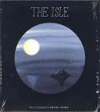 Vastness of an ocean or shallowness of a bathtub? The Islewas quietly put on a musical map by Japanese cartographers P-Vine backin April, joining the ranks of sea-themed concept albums such as PianoMagic's A Trick of the Sea and Rachel's The Sea and the Bells(diaries of aquatic adventures, scrupulous accounts of seasickness,logbooks of navel/naval gazing). Unlike its conceptual predecessors,the creators of The Isle do not go after the epic and theexpansive but aim for the childish and the minimal: a fairy tale. It'sa split album cleverly disguised as a collaboration. Tokyo's SohichiroSuzuki (World Standard) and Cologne's Jörg Follert (Wechsel Garland,Wunder, 1/3 of Visor) each contributed seven compositions and'co-wrote' only the title track, swapping ideas via mail. On firstencounter, Suzuki's and Follert's previous efforts seem more satisfyingthan this. Through their infantile melodies and simplisticarrangements, the musicians channel not the vastness and deepness ofthe sea but the rather comfortable confines of a washbasin. A faintasthmatic wheeze of a rubber ducky at the end of the first trackreinforces this impression. Subsequent listens, however, reveal a muchricher palette of mood, harmony and texture, full of subtleties thatwere not apparent initially. Acoustic guitars, xylophones, toy pianos,melodicas and violins (most of the string parts masterfully played byan uncredited Susanna Welsch) are weaving a patchwork of pointillistwaltzes, plinky bossa-novas, mournful ambient vignettes, and even oneharpsichord-driven ballad beautifully sung (in German) by Follert, "TheHarbour," which, incidentally, is the only vocal piece on the album.The result is not a heavy-lidded Odyssey but rather a Treasure Islandas enacted by talented carefree kids, wearing oversized Hessian bootsand paper cocked hats, with prop parrots perched on their narrowshoulders and plastic spyglasses pressed firmly to their wide-openeyes. This is Visine-washed music, clear and bright. The latitude andlongitude of The Isle may be different from the ambientbanjoisms of World Standard's Country Gazette or cinematic dubisms ofWechsel Garland's Liberation von History but it confidently stands onits own in the murky sea of this year's music. The last harbor for theLost Children.
Vastness of an ocean or shallowness of a bathtub? The Islewas quietly put on a musical map by Japanese cartographers P-Vine backin April, joining the ranks of sea-themed concept albums such as PianoMagic's A Trick of the Sea and Rachel's The Sea and the Bells(diaries of aquatic adventures, scrupulous accounts of seasickness,logbooks of navel/naval gazing). Unlike its conceptual predecessors,the creators of The Isle do not go after the epic and theexpansive but aim for the childish and the minimal: a fairy tale. It'sa split album cleverly disguised as a collaboration. Tokyo's SohichiroSuzuki (World Standard) and Cologne's Jörg Follert (Wechsel Garland,Wunder, 1/3 of Visor) each contributed seven compositions and'co-wrote' only the title track, swapping ideas via mail. On firstencounter, Suzuki's and Follert's previous efforts seem more satisfyingthan this. Through their infantile melodies and simplisticarrangements, the musicians channel not the vastness and deepness ofthe sea but the rather comfortable confines of a washbasin. A faintasthmatic wheeze of a rubber ducky at the end of the first trackreinforces this impression. Subsequent listens, however, reveal a muchricher palette of mood, harmony and texture, full of subtleties thatwere not apparent initially. Acoustic guitars, xylophones, toy pianos,melodicas and violins (most of the string parts masterfully played byan uncredited Susanna Welsch) are weaving a patchwork of pointillistwaltzes, plinky bossa-novas, mournful ambient vignettes, and even oneharpsichord-driven ballad beautifully sung (in German) by Follert, "TheHarbour," which, incidentally, is the only vocal piece on the album.The result is not a heavy-lidded Odyssey but rather a Treasure Islandas enacted by talented carefree kids, wearing oversized Hessian bootsand paper cocked hats, with prop parrots perched on their narrowshoulders and plastic spyglasses pressed firmly to their wide-openeyes. This is Visine-washed music, clear and bright. The latitude andlongitude of The Isle may be different from the ambientbanjoisms of World Standard's Country Gazette or cinematic dubisms ofWechsel Garland's Liberation von History but it confidently stands onits own in the murky sea of this year's music. The last harbor for theLost Children.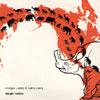 Originally released in September 2002, Magic Radios is the documented collaboration between experimental jazz musician Morgan Caney and electronic-based composer Kamal Joory, showcasing an interesting blend of both their backgrounds for nine compositions and a remix.
Originally released in September 2002, Magic Radios is the documented collaboration between experimental jazz musician Morgan Caney and electronic-based composer Kamal Joory, showcasing an interesting blend of both their backgrounds for nine compositions and a remix.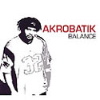 Just after Saul Williams' Amethyst Rock Starwas released, I got into some great arguments with longtime hip-hopfans who found his high-minded, pandering-be-damned (literally)approach to hip-hop a tad bit pretentious. Similar complaints can't bemade about Akrobatik, who comes across instead like the cool-but-savvyuncle that every kid should be able to turn to for advice. Ak is allfor doling out the science, but like he says on the title track, "Youcan study for years and be the world's top scholar, but trying to makethe fans feel dumb won't make 'em holler." Most of the album is aboutkeeping it together in one way or another, finding common groundbetween the nerds and the thugs, building communities that sustainthemselves, and generally being excellent to one another: Keanu Reeveswould be proud, and the front-porch family feel of most of the albummakes for friendly, comfortable listening. The inclusion of "Woman, Pt.II" (an honest take on the conflicting impulses behind dating) justlends, well, balance to the proceedings. As you might expect by now, Balancefeels more like the effort of an accomplished craftsman than theproduct of some firebrand artist: the bombast and atmosphere of, say, aDef Jux or Hieroglyphics record is nowhere in sight, and I'm not alwaysin the mood for the Sunday-afternoon coziness of some of this stuff.(Think Blackalicious without the craziest of the verbal gymnastics andyou've just about got it.) Oh, and it does feature one bog-standardObnoxious DJ Intro (courtesy of Evil Dee, on the album-low track"Always Bet On Ak")... I guess that's a negative point, too. Asantidotes to hip-pop go, though, this one is well worth hearing. Thatmight not be the strongest recommendation possible, but maybeunassuming support is what's called for with an album and an artistlike this.
Just after Saul Williams' Amethyst Rock Starwas released, I got into some great arguments with longtime hip-hopfans who found his high-minded, pandering-be-damned (literally)approach to hip-hop a tad bit pretentious. Similar complaints can't bemade about Akrobatik, who comes across instead like the cool-but-savvyuncle that every kid should be able to turn to for advice. Ak is allfor doling out the science, but like he says on the title track, "Youcan study for years and be the world's top scholar, but trying to makethe fans feel dumb won't make 'em holler." Most of the album is aboutkeeping it together in one way or another, finding common groundbetween the nerds and the thugs, building communities that sustainthemselves, and generally being excellent to one another: Keanu Reeveswould be proud, and the front-porch family feel of most of the albummakes for friendly, comfortable listening. The inclusion of "Woman, Pt.II" (an honest take on the conflicting impulses behind dating) justlends, well, balance to the proceedings. As you might expect by now, Balancefeels more like the effort of an accomplished craftsman than theproduct of some firebrand artist: the bombast and atmosphere of, say, aDef Jux or Hieroglyphics record is nowhere in sight, and I'm not alwaysin the mood for the Sunday-afternoon coziness of some of this stuff.(Think Blackalicious without the craziest of the verbal gymnastics andyou've just about got it.) Oh, and it does feature one bog-standardObnoxious DJ Intro (courtesy of Evil Dee, on the album-low track"Always Bet On Ak")... I guess that's a negative point, too. Asantidotes to hip-pop go, though, this one is well worth hearing. Thatmight not be the strongest recommendation possible, but maybeunassuming support is what's called for with an album and an artistlike this.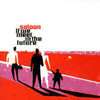 Last year around this time, I reviewed Saloon's debut album, This Is What We Call Progress.In it, I expressed the hope that with time, the Reading, UK quintetwould more fully develop and enrich their fledgling sound. If We Meet In the Future,their new album, unfortunately does not show evidence of the outcomefor which I'd hoped. Still taking strong cues from Stereolab andBroadcast, Saloon sadly never seems to quite live up to their fullpotential. This is not to say that any of their songs are unlistenable,but simply that their humble approach to recording is just *too*humble. If We Meet In the Future has a few lovely tracks: "QueQuieres?" is soothingly melancholic and "Dreams Mean Nothing" featuresa hypnotic film-noir croon. The originality of these two tracks standin marked contrast to more meandering, uninteresting songs like"Absence" and "The Good Life." Lead singer Amanda Gomez' voice is sweetand easy on the ears, but often lacks backbone. That said, and despitemy complaints with this album, I still feel that Saloon has the talentto come into their own and mature into something more substantial, butthe question remains whether or not they can actually pull it off.
Last year around this time, I reviewed Saloon's debut album, This Is What We Call Progress.In it, I expressed the hope that with time, the Reading, UK quintetwould more fully develop and enrich their fledgling sound. If We Meet In the Future,their new album, unfortunately does not show evidence of the outcomefor which I'd hoped. Still taking strong cues from Stereolab andBroadcast, Saloon sadly never seems to quite live up to their fullpotential. This is not to say that any of their songs are unlistenable,but simply that their humble approach to recording is just *too*humble. If We Meet In the Future has a few lovely tracks: "QueQuieres?" is soothingly melancholic and "Dreams Mean Nothing" featuresa hypnotic film-noir croon. The originality of these two tracks standin marked contrast to more meandering, uninteresting songs like"Absence" and "The Good Life." Lead singer Amanda Gomez' voice is sweetand easy on the ears, but often lacks backbone. That said, and despitemy complaints with this album, I still feel that Saloon has the talentto come into their own and mature into something more substantial, butthe question remains whether or not they can actually pull it off. Stefan Schneider's latest release as Mapstation features reworkings andversions of tracks from his full-length, as well as some new tracks.The focus is on Schneider's work with reggae singer Ras Donovan on"Gravity" and "Wake Up," which appeared on A Way to Find the Dayand gets two versions here. While the pairing is an interesting onethat is sure to spark more interest and conversation, it is still anawkward one as this release shows. The two men have certainly grownmore comfortable working together, and their music is full of melodywith a lazy shifting style. Relaxation is a given, with a gentle bounceand sway that begs the body to rise and fall with the proceedings.Unfortunately, the collaboration still doesn't connect fully, withSchneider's music providing a backdrop that is often, though notalways, jarred by the voice and inflections of Donovan. "Gravity" isfull of lyrics of polarity, opposites, and the expected call-outs ofreggae and dub, but Donovan's staccato is still too harsh for itssurroundings. "Wake Up" gets reinterpreted with Scallo, a DJ-vocalistwith ties to Donovan, but Scallo's jarring delivery creates cracks inan otherwise smooth exterior. "Wake Up version," in fact, is arevelation just because it features no vocals, and the true essence ofthe track is allowed to be on display. Not to be too cutting, though,on "Be True" the pair get it just right: Donovan wails and professes,with as little rapping or chatting as possible. Suddenly atransformation occurs, and even though the lyrics are a bit simplistic,juvenile, even, the rhythm and vocals are sexy enough to make you losecontrol, and forget whatever you were just thinking about. Schneider'sother work, including Radian's Martin Brandlmayr this time, is asconcise and yet full of life as always, particularly "Effects of MyHaste." For once, I felt the true meaning of the Donovan connection,though, and based on the promise of "Be True," there's greatness on thehorizon from these two.
Stefan Schneider's latest release as Mapstation features reworkings andversions of tracks from his full-length, as well as some new tracks.The focus is on Schneider's work with reggae singer Ras Donovan on"Gravity" and "Wake Up," which appeared on A Way to Find the Dayand gets two versions here. While the pairing is an interesting onethat is sure to spark more interest and conversation, it is still anawkward one as this release shows. The two men have certainly grownmore comfortable working together, and their music is full of melodywith a lazy shifting style. Relaxation is a given, with a gentle bounceand sway that begs the body to rise and fall with the proceedings.Unfortunately, the collaboration still doesn't connect fully, withSchneider's music providing a backdrop that is often, though notalways, jarred by the voice and inflections of Donovan. "Gravity" isfull of lyrics of polarity, opposites, and the expected call-outs ofreggae and dub, but Donovan's staccato is still too harsh for itssurroundings. "Wake Up" gets reinterpreted with Scallo, a DJ-vocalistwith ties to Donovan, but Scallo's jarring delivery creates cracks inan otherwise smooth exterior. "Wake Up version," in fact, is arevelation just because it features no vocals, and the true essence ofthe track is allowed to be on display. Not to be too cutting, though,on "Be True" the pair get it just right: Donovan wails and professes,with as little rapping or chatting as possible. Suddenly atransformation occurs, and even though the lyrics are a bit simplistic,juvenile, even, the rhythm and vocals are sexy enough to make you losecontrol, and forget whatever you were just thinking about. Schneider'sother work, including Radian's Martin Brandlmayr this time, is asconcise and yet full of life as always, particularly "Effects of MyHaste." For once, I felt the true meaning of the Donovan connection,though, and based on the promise of "Be True," there's greatness on thehorizon from these two. There's a chilled-out and generally cool feeling to every song on this disc. Every song is a pure, vibrating, and relaxing mix of dub beats and hypnotic melodies culled from a myriad of cultural influences.
There's a chilled-out and generally cool feeling to every song on this disc. Every song is a pure, vibrating, and relaxing mix of dub beats and hypnotic melodies culled from a myriad of cultural influences.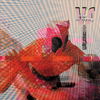 Collaboration between jazz and hip-hop seems very natural, and one would expect the meeting of these two creative, improvisational, dynamic styles would result in a compelling piece of music. Still, the individual components of such a meeting would have to be up to the task, and on this release one side is, and the other is clearly not. Things start out well enough with "Places I've Never Been."
Collaboration between jazz and hip-hop seems very natural, and one would expect the meeting of these two creative, improvisational, dynamic styles would result in a compelling piece of music. Still, the individual components of such a meeting would have to be up to the task, and on this release one side is, and the other is clearly not. Things start out well enough with "Places I've Never Been." The casino reveals itself to be a source of much more than free buffetsand cheap thrills on this unprocessed field recording that combinesVegas with Antiguan tree frogs, but the uncompromisingly raw format andlack of manipulation hold back my interest. Coleclough's recordingshave consistently amazed me with their exquisite processing andarrangement of sonic minutiae, drawing out the tonalities of metal,acoustic instruments, and nature sounds into epic, drone-based pieces.But that discography makes this record's simplicity even moredisappointing. Though it's well arranged—for a straight fieldrecording—I can't help but imagine what this could've been with alittle work. Coleclough has generally succeeded in exploiting thesimilarities and differences of natural and artificial sounds, and thatis the highlight of this recording. The first side of the LP, or tenminutes of the accompanying CD which extends and gradually mixes thetwo sides, is the pinnacle of casino gaudiness, with tinny slot machinejingles, ringing coins, and distant country music riffs. The slots growgrating before long, but luckily Coleclough knows when to move on. Therecording improves from there, especially on the CD version, as themusic gently transitions into the second part's ocean waves and frogs,whose chirping bears subtle similarities to the previous digitalcacophony. The frog sounds are nothing special and don't exhibit muchdevelopment. It's evidence that, given enough patience, listeningclosely to almost anything will reveal detail previously overlooked. Sowhile I like this record, it's not something I'll listen to very often,and the sparse, soothing sounds of ocean waves at the conclusion remindme of some bad "relaxation" tape. Casinois rather collector-oriented, released on a massive piece of vinyl inan edition of 400. I'd definitely advise anyone interested in doingsome serious listening to check out Coleclough, but start with one ofhis composed works, such as the excellent, and readily available, Period.
The casino reveals itself to be a source of much more than free buffetsand cheap thrills on this unprocessed field recording that combinesVegas with Antiguan tree frogs, but the uncompromisingly raw format andlack of manipulation hold back my interest. Coleclough's recordingshave consistently amazed me with their exquisite processing andarrangement of sonic minutiae, drawing out the tonalities of metal,acoustic instruments, and nature sounds into epic, drone-based pieces.But that discography makes this record's simplicity even moredisappointing. Though it's well arranged—for a straight fieldrecording—I can't help but imagine what this could've been with alittle work. Coleclough has generally succeeded in exploiting thesimilarities and differences of natural and artificial sounds, and thatis the highlight of this recording. The first side of the LP, or tenminutes of the accompanying CD which extends and gradually mixes thetwo sides, is the pinnacle of casino gaudiness, with tinny slot machinejingles, ringing coins, and distant country music riffs. The slots growgrating before long, but luckily Coleclough knows when to move on. Therecording improves from there, especially on the CD version, as themusic gently transitions into the second part's ocean waves and frogs,whose chirping bears subtle similarities to the previous digitalcacophony. The frog sounds are nothing special and don't exhibit muchdevelopment. It's evidence that, given enough patience, listeningclosely to almost anything will reveal detail previously overlooked. Sowhile I like this record, it's not something I'll listen to very often,and the sparse, soothing sounds of ocean waves at the conclusion remindme of some bad "relaxation" tape. Casinois rather collector-oriented, released on a massive piece of vinyl inan edition of 400. I'd definitely advise anyone interested in doingsome serious listening to check out Coleclough, but start with one ofhis composed works, such as the excellent, and readily available, Period.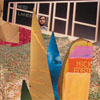 Nick Forte is half of a duo called Christmas Decorations that releaseda pretty decent album on Kranky last year. For his first soloexcursion, he's come up with a mini-album that crams 15 tracks intojust over half and hour. The record has an excellent starting point in"Green Language," where Forte expertly weaves together a dubbed-outbackdrop, broken-down machine beats and swirling layers of sound andnoise into a really satisfying work that always seems to be on theverge of falling apart. But the good feeling brought on by of thosefirst few moments is quickly deflated, as the one- to two-minute tracksthat make up most of the disc are unexciting little bursts of abstractsound that go nowhere fast. Some promising flashes of structure appearin a couple of places, most notably on "Thistle Rue" and "ForgottenMusic", but generally Pasted Lakes sounds like a collection of unfinished ideas and unfocused sound farts, few of which I find especially appealing.
Nick Forte is half of a duo called Christmas Decorations that releaseda pretty decent album on Kranky last year. For his first soloexcursion, he's come up with a mini-album that crams 15 tracks intojust over half and hour. The record has an excellent starting point in"Green Language," where Forte expertly weaves together a dubbed-outbackdrop, broken-down machine beats and swirling layers of sound andnoise into a really satisfying work that always seems to be on theverge of falling apart. But the good feeling brought on by of thosefirst few moments is quickly deflated, as the one- to two-minute tracksthat make up most of the disc are unexciting little bursts of abstractsound that go nowhere fast. Some promising flashes of structure appearin a couple of places, most notably on "Thistle Rue" and "ForgottenMusic", but generally Pasted Lakes sounds like a collection of unfinished ideas and unfocused sound farts, few of which I find especially appealing.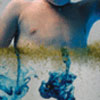 I did, however, find a lot to enjoy on Chaotech Odd Echo,the first full-length album from Japan's Kiyoshi Ono a.k.a. Kiyo.Reportedly, this disc arrived at the Schematic offices with a note thatread "Enjoy warm noise from Japan," and that phrase that fits the albumquite nicely. The artist's website bio reveals him to be a fan of DavidLynch and Stanley Kubrick, and through his juxtaposition of melodicsketches and fractured beats with layers of subtle rumbles andin-and-out waves of crackling static, he manages to evoke a sense ofunease and edginess in his music that is similar to that found in thosedirector's films. There are a couple moments where things threaten toget a little too flighty and abstract, but Kiyo has a good handle onhow to keep the listener's attention by balancing those non-linearimpulses with warm harmonics and clank-and-crunch rhythms.
I did, however, find a lot to enjoy on Chaotech Odd Echo,the first full-length album from Japan's Kiyoshi Ono a.k.a. Kiyo.Reportedly, this disc arrived at the Schematic offices with a note thatread "Enjoy warm noise from Japan," and that phrase that fits the albumquite nicely. The artist's website bio reveals him to be a fan of DavidLynch and Stanley Kubrick, and through his juxtaposition of melodicsketches and fractured beats with layers of subtle rumbles andin-and-out waves of crackling static, he manages to evoke a sense ofunease and edginess in his music that is similar to that found in thosedirector's films. There are a couple moments where things threaten toget a little too flighty and abstract, but Kiyo has a good handle onhow to keep the listener's attention by balancing those non-linearimpulses with warm harmonics and clank-and-crunch rhythms.  For the second full-length collaborative release between members ofLanding and Yume Bitsu, Surface of Eceyon have decided to use theirlive studio tracks without overdubs or post-production. By doing this,listeners have a special glimpse at what their raw in-studio sessionsactually sound like. The down side is the curse of the fade ins andouts: Fading a song in at the beginning and out at the end is a majorcop-out. I can't think of one listener who is fooled into believingthat what we hear is all that there is when a song fades in at thebeginning and/or out at the end. The result is the feeling that thereis something more that we're not allowed to have. Most of the time, thereason is that the group probably agreed to use the most interestingpart. Using that argument, however, it's clearly a way to cheat theobstacle of composing a good song with an appropriate cadence. Iconsider Landing close friends of mine and I have loved nearlyeverything I have heard. I've seen Adam Forkner before live both withYume Bitsu and Surface of Eceyon and so long as the hair and prancingcan be ignored, there is a lot to be said about the sounds that fireout of his guitar. It's not beyond any of them to write a good song,but a lot of neat guitar effects, late night jam sessions, and decentriffs doesn't necessarily make a great record.
For the second full-length collaborative release between members ofLanding and Yume Bitsu, Surface of Eceyon have decided to use theirlive studio tracks without overdubs or post-production. By doing this,listeners have a special glimpse at what their raw in-studio sessionsactually sound like. The down side is the curse of the fade ins andouts: Fading a song in at the beginning and out at the end is a majorcop-out. I can't think of one listener who is fooled into believingthat what we hear is all that there is when a song fades in at thebeginning and/or out at the end. The result is the feeling that thereis something more that we're not allowed to have. Most of the time, thereason is that the group probably agreed to use the most interestingpart. Using that argument, however, it's clearly a way to cheat theobstacle of composing a good song with an appropriate cadence. Iconsider Landing close friends of mine and I have loved nearlyeverything I have heard. I've seen Adam Forkner before live both withYume Bitsu and Surface of Eceyon and so long as the hair and prancingcan be ignored, there is a lot to be said about the sounds that fireout of his guitar. It's not beyond any of them to write a good song,but a lot of neat guitar effects, late night jam sessions, and decentriffs doesn't necessarily make a great record.  The title means "the open society," and Thilges3 mean it. The bandprides themselves on a bit of performance politics, but in this casethey come off as the free labor wing. Thilges3 firmly believe thatvenue affects performance, and therefore select carefully where torecord and who to record with. The only thing that remains a constant,is the paint they splatter on their canvas: analogue synthesizers. Die Offene Gesellschaftis their debut full-length, and shows great potential for their concept— society-altering music — while failing in certain aspects. Thealbum's opening is a call to arms, with stuttered synth beats andwhale-like echoes showing the way. The mind stutters, the feet want tomove, and the hands want to act. Though repititious, it serves whatseems to be its intended purpose: what you are about to hear is not tobe taken lightly. The songs on the album came out of performances forchildren, monks, and criminals, and field recordings of all three findtheir way onto the release, which is part of the wonder and all of theproblem. The second track opens with a conversation over dinner, thatincludes chants, flatware on plates, even someone blowing their nose.Unfortunately, it sounds like what you hear at a concert when no one isinterested in what's on stage. It serves no purpose at all, other thanto start the track but fade out when the real music starts; and when itcomes in, it creates a stir of fears with its loud pulses, glitches,and swirls. The music is fine, it's just the field recordings that areunnecessary and maim the performance rather than help it in areas. Thechildren chatting and singing on "KiBe," for instance, annoy more thanentertain, and it took me away from the glory of the music. The venueis important, just as long as it's empty. Once Thilges3 try that on forsize, the music will take over, and the results won't just beinnovative: they'll be stunning.
The title means "the open society," and Thilges3 mean it. The bandprides themselves on a bit of performance politics, but in this casethey come off as the free labor wing. Thilges3 firmly believe thatvenue affects performance, and therefore select carefully where torecord and who to record with. The only thing that remains a constant,is the paint they splatter on their canvas: analogue synthesizers. Die Offene Gesellschaftis their debut full-length, and shows great potential for their concept— society-altering music — while failing in certain aspects. Thealbum's opening is a call to arms, with stuttered synth beats andwhale-like echoes showing the way. The mind stutters, the feet want tomove, and the hands want to act. Though repititious, it serves whatseems to be its intended purpose: what you are about to hear is not tobe taken lightly. The songs on the album came out of performances forchildren, monks, and criminals, and field recordings of all three findtheir way onto the release, which is part of the wonder and all of theproblem. The second track opens with a conversation over dinner, thatincludes chants, flatware on plates, even someone blowing their nose.Unfortunately, it sounds like what you hear at a concert when no one isinterested in what's on stage. It serves no purpose at all, other thanto start the track but fade out when the real music starts; and when itcomes in, it creates a stir of fears with its loud pulses, glitches,and swirls. The music is fine, it's just the field recordings that areunnecessary and maim the performance rather than help it in areas. Thechildren chatting and singing on "KiBe," for instance, annoy more thanentertain, and it took me away from the glory of the music. The venueis important, just as long as it's empty. Once Thilges3 try that on forsize, the music will take over, and the results won't just beinnovative: they'll be stunning.  The liner notes remark how this recording was played while watching thefires burn in the aftermath of September 11th. There's an emotionalelement present before even a single note is heard. Even without thatintroduction, The Disintegration Loopswould be a masterpiece of minimalist composition. It is suffused withthe most exciting qualities a musical recording can hope to have:simplicity, intrigue, beauty, and emotion. The sound itself is theresult of a recording of American pastoral music on magnetic tapefalling to pieces as it is played and transferred to a digital medium.The disintegration of the tape itself spawns a living and breathingbrass organism swaying to and fro, changing subtly and magnificentlyover time. It's a simple recording, its main attraction being theserenity of the instruments as they fall away and die but it is alsosupported by the elegance of the process itself. There's simply no wayof avoiding the emotional impact this music has. Even without WilliamBasinski's ruminations about the origins of this recording and whatthose origins mean to him, the music would be morose, breath-taking,and triumphant. There's an inescapable sadness throughout the entireexperience but it is coupled with a sense of wonder and freedom and isthe first recent recording I've heard that feels American. This mightbe the result of my ignorance or perhaps the liner notes are beginningto seep into my blood but I can see the plains of Illinois and thebadlands of South Dakota when I listen. The colossal beauty of themountains in the west and the west coast's monolith, the Pacific Ocean,are all resurrected from my memory and relived vividly through thesound of full, tranquil swells. It's astonishing how much the loopchanges over time. Handsome tones begin to distinguish themselves froma mass of sound and breathe their resonant melody through space beforebeing swept away and lost. Released in 2002, The Disintegration Loopsis probably the most exciting and stunning piece of music I've heardsince the year changed over. It has reminded me of how powerful musiccan really be. Don't be fooled, though: the power doesn't have to comefrom the association Basinski draws between September 11th and themusic (though there's nothing wrong with his association). The power iswithin the music and the process, both of which are responsible for thecreation of an album that perfectly captures the geography and spiritof modern America.
The liner notes remark how this recording was played while watching thefires burn in the aftermath of September 11th. There's an emotionalelement present before even a single note is heard. Even without thatintroduction, The Disintegration Loopswould be a masterpiece of minimalist composition. It is suffused withthe most exciting qualities a musical recording can hope to have:simplicity, intrigue, beauty, and emotion. The sound itself is theresult of a recording of American pastoral music on magnetic tapefalling to pieces as it is played and transferred to a digital medium.The disintegration of the tape itself spawns a living and breathingbrass organism swaying to and fro, changing subtly and magnificentlyover time. It's a simple recording, its main attraction being theserenity of the instruments as they fall away and die but it is alsosupported by the elegance of the process itself. There's simply no wayof avoiding the emotional impact this music has. Even without WilliamBasinski's ruminations about the origins of this recording and whatthose origins mean to him, the music would be morose, breath-taking,and triumphant. There's an inescapable sadness throughout the entireexperience but it is coupled with a sense of wonder and freedom and isthe first recent recording I've heard that feels American. This mightbe the result of my ignorance or perhaps the liner notes are beginningto seep into my blood but I can see the plains of Illinois and thebadlands of South Dakota when I listen. The colossal beauty of themountains in the west and the west coast's monolith, the Pacific Ocean,are all resurrected from my memory and relived vividly through thesound of full, tranquil swells. It's astonishing how much the loopchanges over time. Handsome tones begin to distinguish themselves froma mass of sound and breathe their resonant melody through space beforebeing swept away and lost. Released in 2002, The Disintegration Loopsis probably the most exciting and stunning piece of music I've heardsince the year changed over. It has reminded me of how powerful musiccan really be. Don't be fooled, though: the power doesn't have to comefrom the association Basinski draws between September 11th and themusic (though there's nothing wrong with his association). The power iswithin the music and the process, both of which are responsible for thecreation of an album that perfectly captures the geography and spiritof modern America. 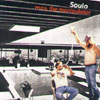 Thelast few years have been a pretty interesting time for pop andelectronic music. As the technological side of music has gained morecredibility as an art form, it's taken on some more "traditional"facets which have spun off a bunch of interesting hybrids that continueto collide and fuse amongst themselves. Man, the Manipulator,the second release from the Chicago art school duo of Shawn King andNate Flanigan as Soulo, is a prime example of how mixing laid back,orchestrated pop songwriting with various areas of electronic music canremain focused without leaning too heavily in one general direction andstill be very "musical" in the traditional sense. The warmth ofacoustic guitar and Theremin-like whistling keyboard on the intro of"How Do You Feel?" remains throughout the addition of relaxed machinebeats, bass end and the near squelch of keyboards, even when it dropsout for some simple, yet effective organ licks. The ethereal "Emotions,Can You Trust Them?" builds from the murkiness of synth ambience tosoft vocals and pitch bending bass peppered with piano, held togetherwith a rhythm so laid-back that you could drive a truck between thebeats. "Born Female" blurs backwards guitar and violin into an almostcall and response melodic line over Rhodes piano, thickeningelectro-bass and crisp machine beats for a sweetness that's summed upin all of two minutes. Rounding out the disc's twelve tracks, "ThePeter Principle" opens with a scratchy punch-in-the-gut rhythm,electro-chaos, feedback and heavy metal power chords that drag it in araunchy direction only to subside in intensity once upright bass,trumpet, violin, clarinet and banjo (yes, banjo) come quickly to theforefront. It's quirky, yet makes perfect sense and totally works. Atjust over thirty-eight minutes, the bulk of the disc's tracks are inand around the three minute mark, which tends to be a bit brief forsome ideas to play out and be embellished. By the same token, Soulo'ssparingly used clever and popish hooks are more effective in thismanner than listening to them repeat a thousand times so as to addanother synth module.
Thelast few years have been a pretty interesting time for pop andelectronic music. As the technological side of music has gained morecredibility as an art form, it's taken on some more "traditional"facets which have spun off a bunch of interesting hybrids that continueto collide and fuse amongst themselves. Man, the Manipulator,the second release from the Chicago art school duo of Shawn King andNate Flanigan as Soulo, is a prime example of how mixing laid back,orchestrated pop songwriting with various areas of electronic music canremain focused without leaning too heavily in one general direction andstill be very "musical" in the traditional sense. The warmth ofacoustic guitar and Theremin-like whistling keyboard on the intro of"How Do You Feel?" remains throughout the addition of relaxed machinebeats, bass end and the near squelch of keyboards, even when it dropsout for some simple, yet effective organ licks. The ethereal "Emotions,Can You Trust Them?" builds from the murkiness of synth ambience tosoft vocals and pitch bending bass peppered with piano, held togetherwith a rhythm so laid-back that you could drive a truck between thebeats. "Born Female" blurs backwards guitar and violin into an almostcall and response melodic line over Rhodes piano, thickeningelectro-bass and crisp machine beats for a sweetness that's summed upin all of two minutes. Rounding out the disc's twelve tracks, "ThePeter Principle" opens with a scratchy punch-in-the-gut rhythm,electro-chaos, feedback and heavy metal power chords that drag it in araunchy direction only to subside in intensity once upright bass,trumpet, violin, clarinet and banjo (yes, banjo) come quickly to theforefront. It's quirky, yet makes perfect sense and totally works. Atjust over thirty-eight minutes, the bulk of the disc's tracks are inand around the three minute mark, which tends to be a bit brief forsome ideas to play out and be embellished. By the same token, Soulo'ssparingly used clever and popish hooks are more effective in thismanner than listening to them repeat a thousand times so as to addanother synth module. Scott Sinfield and Jon Attwood (or Portal and Yellow6) met when Attwooddonated guitar for a track on Portal's debut album. Shortly thereafter,the pair began making music together on a limited basis. They sharedthe stage on tour, backing each other for their respective projects,and for a series of split EPs in 2000, they covered each other's songs.Finally, on the debut release from their own label, Make Mine Music,the two properly collaborate. Both Portal and Yellow6 get two tracks apiece on this split, as well as the four tracks they perform together,and in this case the whole truly is greater than the sum of its parts.I'll go as far as to say the two gentlemen should start a new bandtogether, bring vocalist Rachel Hughes along for the ride, and leavetheir separate discographies in the dust. Portal starts off the releasewith a cold air, a temperature setting that remains for half therelease. Hughes, who has worked with Sinfield since his debut, soundsdetached and aloof, as she sings about her misconceptions and seeminglyundying hope. Then, on "The First Breath of Winter," the chill settlesin, as breath turns to mist, and the programmed beat, keyboards, andechoed guitar emit languish in their confines. The track threatens togo somewhere, but ultimately stays static, yet again reinforcing adetachment and brushing off. Yellow6 seems to take this frozen energyat face value, presenting "Threefold," a track that starts with simpleguitar structures and a minimalist beat. None of this should beperceived as negative: the song is still enough to make the heartpatter, albeit at a slower pace. At about the three minute mark,though, Yellow6 returns to form, opening the door for virulentdistortion that spills everywhere. This is not warmth that lasts,however, as the track ends on the same cold note on which it began."The Sinking Sun" is also appropriately titled, as though the lunarteam is stuck, and they watch the daylight fade, unable to stop it orsave themselves. Even in the clutches of such a cold death, the moonseems to shift its rotation on the next track, the first of thecontributions to feature both artists. Suddenly, there is hope,possibility, life, and a hint of meaning to all of existence. It's thatpowerful, that moving, and it lasts for nigh on twenty-four minutes.Sometimes, the cold fights to return, such as on "#5," but it isn'tstrong enough to cause the ice age it threatens. The fire stays, evenbuilds somewhat glacially on "#3;" and although both Sinfield andAttwood shouldn't quit their day jobs, they should make a record likethis together and share more of this ambient wonder with the world.Make Mine Music also shows potential as a quite progressive label, withPortal, Yellow6, and Epic 45 full-lengths already released orforthcoming.
Scott Sinfield and Jon Attwood (or Portal and Yellow6) met when Attwooddonated guitar for a track on Portal's debut album. Shortly thereafter,the pair began making music together on a limited basis. They sharedthe stage on tour, backing each other for their respective projects,and for a series of split EPs in 2000, they covered each other's songs.Finally, on the debut release from their own label, Make Mine Music,the two properly collaborate. Both Portal and Yellow6 get two tracks apiece on this split, as well as the four tracks they perform together,and in this case the whole truly is greater than the sum of its parts.I'll go as far as to say the two gentlemen should start a new bandtogether, bring vocalist Rachel Hughes along for the ride, and leavetheir separate discographies in the dust. Portal starts off the releasewith a cold air, a temperature setting that remains for half therelease. Hughes, who has worked with Sinfield since his debut, soundsdetached and aloof, as she sings about her misconceptions and seeminglyundying hope. Then, on "The First Breath of Winter," the chill settlesin, as breath turns to mist, and the programmed beat, keyboards, andechoed guitar emit languish in their confines. The track threatens togo somewhere, but ultimately stays static, yet again reinforcing adetachment and brushing off. Yellow6 seems to take this frozen energyat face value, presenting "Threefold," a track that starts with simpleguitar structures and a minimalist beat. None of this should beperceived as negative: the song is still enough to make the heartpatter, albeit at a slower pace. At about the three minute mark,though, Yellow6 returns to form, opening the door for virulentdistortion that spills everywhere. This is not warmth that lasts,however, as the track ends on the same cold note on which it began."The Sinking Sun" is also appropriately titled, as though the lunarteam is stuck, and they watch the daylight fade, unable to stop it orsave themselves. Even in the clutches of such a cold death, the moonseems to shift its rotation on the next track, the first of thecontributions to feature both artists. Suddenly, there is hope,possibility, life, and a hint of meaning to all of existence. It's thatpowerful, that moving, and it lasts for nigh on twenty-four minutes.Sometimes, the cold fights to return, such as on "#5," but it isn'tstrong enough to cause the ice age it threatens. The fire stays, evenbuilds somewhat glacially on "#3;" and although both Sinfield andAttwood shouldn't quit their day jobs, they should make a record likethis together and share more of this ambient wonder with the world.Make Mine Music also shows potential as a quite progressive label, withPortal, Yellow6, and Epic 45 full-lengths already released orforthcoming.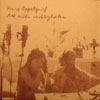 Completely out of the blue comes an extraordinary little CD, sopowerful in its minute way, hugely evocative and humane. The clues towhat's going on are in the photos—a living room recording set up withMr. Appelqvist marshalling apparently amateur singers. He plays thepiano and a few other things, talks to the singers and they sing. It isthe intimacy of it that is most compelling, so intense that it isalmost unbearable but beautiful and joyous in such an honest and directway that is truly unique. Only a few of the Songs in the Key of Zcome close and none have this fragility or fluidity. Zenna and Marieare the two little girls on the first track, they sing a song inSwedish chat and then "Be What You Wanna Be" in English. They don'tseem to know all the words, loose their way, mumble some lines but nomatter—they come back to the chorus with enthusiasm and unaffectedpositivity that only the Langly Schools Music Project can touch.Appelqvist's lively playing is deft and idiosyncratic with a delightfullight touch that adds much musicality without moving beyond the role ofaccompaniment. The directness and total absence of artifice carriesover to the sound quality, which is simply brilliant. It puts you rightthere in that mundane living room with these wonderful people topositively eerie effect, as though you were invading someone's privacy.Xiang, more grown up and probably Chinese, sings on track two. Sheexpresses the self-consciousness that comes after childhood and beforeactual maturity. Ruth, older again, is soloist on track three. Hersong, "Geh aus, mein Herz," is given a strangely menacing backdrop witha few heavy guitar chords and ethereal flutes. She sings with theconfidence of someone who has been through motherhood and long sincesent her children off into the world. She seems to treat Appelqvist'sproject with the indulgence she would give to her grandchildren'santics. One could perhaps say that this disk is about language, how itaffects music, how song, intonation and melody adapt to it. The girlssound so different in English from Swedish, Xiang shows that the melodyof Chinese is inescapable, and Ruth's song in German shows thestrictness of that language and how uncomfortable it is with melody.Interesting as this thought may be, the real stuff here is in theemotion and how we lose so much of that with all the manufacturinginvolved in the other music we hear.
Completely out of the blue comes an extraordinary little CD, sopowerful in its minute way, hugely evocative and humane. The clues towhat's going on are in the photos—a living room recording set up withMr. Appelqvist marshalling apparently amateur singers. He plays thepiano and a few other things, talks to the singers and they sing. It isthe intimacy of it that is most compelling, so intense that it isalmost unbearable but beautiful and joyous in such an honest and directway that is truly unique. Only a few of the Songs in the Key of Zcome close and none have this fragility or fluidity. Zenna and Marieare the two little girls on the first track, they sing a song inSwedish chat and then "Be What You Wanna Be" in English. They don'tseem to know all the words, loose their way, mumble some lines but nomatter—they come back to the chorus with enthusiasm and unaffectedpositivity that only the Langly Schools Music Project can touch.Appelqvist's lively playing is deft and idiosyncratic with a delightfullight touch that adds much musicality without moving beyond the role ofaccompaniment. The directness and total absence of artifice carriesover to the sound quality, which is simply brilliant. It puts you rightthere in that mundane living room with these wonderful people topositively eerie effect, as though you were invading someone's privacy.Xiang, more grown up and probably Chinese, sings on track two. Sheexpresses the self-consciousness that comes after childhood and beforeactual maturity. Ruth, older again, is soloist on track three. Hersong, "Geh aus, mein Herz," is given a strangely menacing backdrop witha few heavy guitar chords and ethereal flutes. She sings with theconfidence of someone who has been through motherhood and long sincesent her children off into the world. She seems to treat Appelqvist'sproject with the indulgence she would give to her grandchildren'santics. One could perhaps say that this disk is about language, how itaffects music, how song, intonation and melody adapt to it. The girlssound so different in English from Swedish, Xiang shows that the melodyof Chinese is inescapable, and Ruth's song in German shows thestrictness of that language and how uncomfortable it is with melody.Interesting as this thought may be, the real stuff here is in theemotion and how we lose so much of that with all the manufacturinginvolved in the other music we hear.  After a series of EPs and singles, northern England's 2 By Bukowski have released their second full, experimenting with spare, atmospheric soundscapes and wild, jarring collisions of noise. On Drink From My Bastard Grail,they straddle the line of introspective ambient and volatilepsyche-rock, offering energizing slivers of each throughout the disc."Chopperfuck" begins with a filthy, snarling guitar riff over slow,crawling drumbeats and heavy, distorted chords that swirl like anintense storm. Suddenly a distant female voice pokes through and theclouds lift as a calm, meditative melody wisps along with it. Therespite is short-lived, and the track once again climbs upward in afrenzy of distorted squeals and groans. "Wild Manner" is a vicious,screaming assault of amplifier feedback, lurching along full of biliousthrust. It's a frenetic sound, yet one that is underpinned by a solid,restrained rhythm that keeps everything from flying out in everyconceivable direction a la Comets on Fire. Bukowski are a far moreprecise outfit than that. The energy can be felt bubbling beneaththere, but the control makes the track all the more tense and cohesive.A simple arrangement of piano triads leads "I Am Ready For Death inThis Dominion," coupled with synthesized strings to give the air of amournful funeral procession. Bukowski plays with standard, thoughtfulpieces as well, eschewing the noise for expansive compositions thatoperate through mood and texture rather than gut reactions. "The LastAerie" and "Gate 3" both take the slow road, the latter using trebledchirps and gurgling effects to evoke a teeming brook and gusts out intoa pleasing pastoral wash. The movement between the louder and softertracks doesn't result in dissonance, but in fact highlights thestrengths of each in contrast. Just when 2 By Bukowski sounds as ifthey are going to pull apart and shatter, they slip in with a welcomeand rejuvenating break from the schizophrenia. An excess of either endof the spectrum would have made for a stale listen, but the group showsthat they can sound powerful and dynamic whether mired in sludgy rockor icy ambiance. 'Drink From My Bastard Grail' is soothing, enervating,pleasing, and provocative. With these tensions rubbing against oneanother, the friction they generate makes for an engaging listen.
After a series of EPs and singles, northern England's 2 By Bukowski have released their second full, experimenting with spare, atmospheric soundscapes and wild, jarring collisions of noise. On Drink From My Bastard Grail,they straddle the line of introspective ambient and volatilepsyche-rock, offering energizing slivers of each throughout the disc."Chopperfuck" begins with a filthy, snarling guitar riff over slow,crawling drumbeats and heavy, distorted chords that swirl like anintense storm. Suddenly a distant female voice pokes through and theclouds lift as a calm, meditative melody wisps along with it. Therespite is short-lived, and the track once again climbs upward in afrenzy of distorted squeals and groans. "Wild Manner" is a vicious,screaming assault of amplifier feedback, lurching along full of biliousthrust. It's a frenetic sound, yet one that is underpinned by a solid,restrained rhythm that keeps everything from flying out in everyconceivable direction a la Comets on Fire. Bukowski are a far moreprecise outfit than that. The energy can be felt bubbling beneaththere, but the control makes the track all the more tense and cohesive.A simple arrangement of piano triads leads "I Am Ready For Death inThis Dominion," coupled with synthesized strings to give the air of amournful funeral procession. Bukowski plays with standard, thoughtfulpieces as well, eschewing the noise for expansive compositions thatoperate through mood and texture rather than gut reactions. "The LastAerie" and "Gate 3" both take the slow road, the latter using trebledchirps and gurgling effects to evoke a teeming brook and gusts out intoa pleasing pastoral wash. The movement between the louder and softertracks doesn't result in dissonance, but in fact highlights thestrengths of each in contrast. Just when 2 By Bukowski sounds as ifthey are going to pull apart and shatter, they slip in with a welcomeand rejuvenating break from the schizophrenia. An excess of either endof the spectrum would have made for a stale listen, but the group showsthat they can sound powerful and dynamic whether mired in sludgy rockor icy ambiance. 'Drink From My Bastard Grail' is soothing, enervating,pleasing, and provocative. With these tensions rubbing against oneanother, the friction they generate makes for an engaging listen. 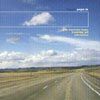 The third single Dave Pajo's series of audio tour diaries showcases hisinterpretation of a couple of covers and one original track; recordedin Bloomington and Chicago while on tour with his current day job,Zwan. Pajo's vocals and country-influenced guitar pickin' on thetraditional "Wild Mountain Thyme" convey the tune's original spirit.Background vocals and strings from collaborators Molly Kien and MaggiePolk make this track all the more authentic. My current favoritehurtin' tune would be Pajo's cover of Little Feat's "Truckstop Girl"with its jangly capo'ed acoustic guitar that, while beautifully played,brings a sadness along with vocals that sing of the end of a loveaffair that results in tragedy. Although the overdubbed electricguitars that take the tune out are fairly simple, their tone and timingare very powerful in context. The original "Who Knows" has Pajohandling the duties of drummer and bass player along with hismulti-tracked vocals and guitars on a relaxed tune whose interestingcountry-tinged chord changes and lyrics feel very comfortable. As thesesingles are being released, I've been wondering if any of the materialmight surface on the next full-length Papa M release. As I'd mentionedin a prior review, there's a certain charm to hearing these tunesstripped down as they are. If this is what Mr. Pajo has been up towhile he's busy on the road, the results from being in a more relaxedstudio environment should be all the more exciting.
The third single Dave Pajo's series of audio tour diaries showcases hisinterpretation of a couple of covers and one original track; recordedin Bloomington and Chicago while on tour with his current day job,Zwan. Pajo's vocals and country-influenced guitar pickin' on thetraditional "Wild Mountain Thyme" convey the tune's original spirit.Background vocals and strings from collaborators Molly Kien and MaggiePolk make this track all the more authentic. My current favoritehurtin' tune would be Pajo's cover of Little Feat's "Truckstop Girl"with its jangly capo'ed acoustic guitar that, while beautifully played,brings a sadness along with vocals that sing of the end of a loveaffair that results in tragedy. Although the overdubbed electricguitars that take the tune out are fairly simple, their tone and timingare very powerful in context. The original "Who Knows" has Pajohandling the duties of drummer and bass player along with hismulti-tracked vocals and guitars on a relaxed tune whose interestingcountry-tinged chord changes and lyrics feel very comfortable. As thesesingles are being released, I've been wondering if any of the materialmight surface on the next full-length Papa M release. As I'd mentionedin a prior review, there's a certain charm to hearing these tunesstripped down as they are. If this is what Mr. Pajo has been up towhile he's busy on the road, the results from being in a more relaxedstudio environment should be all the more exciting.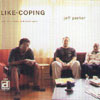 For the first release under his own name, guitarist Jeff Parker(Tortoise/Isotope 217) presents a disc of fairly straight-ahead jazzcompositions in a trio setting featuring longtime associates and fellowChicago Undergrounders Chris Lopes on upright bass and Chad Taylor ondrums. Although Parker's playing is the main focal point with thisformat, the group's well-crafted compositions and support convey anhonesty of a collective recording that just happens to feature theguitar, moreso than a soloist with a backing group. A few free-jazzfreakouts are also included for good measure. Taylor's heartfeltcomposition, "Miriam," opens the disc as a brushed waltz of warm chordchanges that briefly sneak into double time throughout subtle guitarsoloing. The disc's uptempo title track, penned by Lopes, features somecool vamping sections at the chorus' turnaround that solidify thestructure and give a strong reference point during each player's solo.Named for his daughter, Parker's "Days Fly By (with Ruby)" moves froman oom-pah styled unison guitar and bass intro over Taylor's busy brushsoloing to finger snapping swing for some tasteful playing on anoverall great composition. The only hint of structure on thefree-spirited "Omega Sci Fi" are the blasts of walking bass lines thatplay against bombastic drums, splintered cymbals and scraping guitarfor four minutes of busy instrumental dialogue that chases down thenext line to be stated. Fans of Parker's work that have come to expecta certain style of playing and tone with his above mentioned maingroups, along with other projects such as Toe 2000 and Tricolor shouldbe pleasantly surprised with this album. A more traditional style ofwriting and playing that hadn't been as evident before shinesthroughout the recording and shows the vast talent of a great player.
For the first release under his own name, guitarist Jeff Parker(Tortoise/Isotope 217) presents a disc of fairly straight-ahead jazzcompositions in a trio setting featuring longtime associates and fellowChicago Undergrounders Chris Lopes on upright bass and Chad Taylor ondrums. Although Parker's playing is the main focal point with thisformat, the group's well-crafted compositions and support convey anhonesty of a collective recording that just happens to feature theguitar, moreso than a soloist with a backing group. A few free-jazzfreakouts are also included for good measure. Taylor's heartfeltcomposition, "Miriam," opens the disc as a brushed waltz of warm chordchanges that briefly sneak into double time throughout subtle guitarsoloing. The disc's uptempo title track, penned by Lopes, features somecool vamping sections at the chorus' turnaround that solidify thestructure and give a strong reference point during each player's solo.Named for his daughter, Parker's "Days Fly By (with Ruby)" moves froman oom-pah styled unison guitar and bass intro over Taylor's busy brushsoloing to finger snapping swing for some tasteful playing on anoverall great composition. The only hint of structure on thefree-spirited "Omega Sci Fi" are the blasts of walking bass lines thatplay against bombastic drums, splintered cymbals and scraping guitarfor four minutes of busy instrumental dialogue that chases down thenext line to be stated. Fans of Parker's work that have come to expecta certain style of playing and tone with his above mentioned maingroups, along with other projects such as Toe 2000 and Tricolor shouldbe pleasantly surprised with this album. A more traditional style ofwriting and playing that hadn't been as evident before shinesthroughout the recording and shows the vast talent of a great player.
